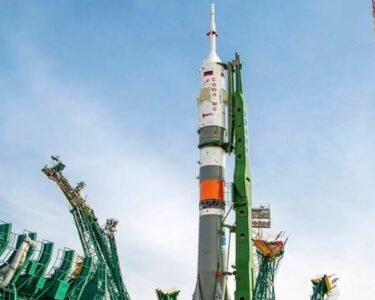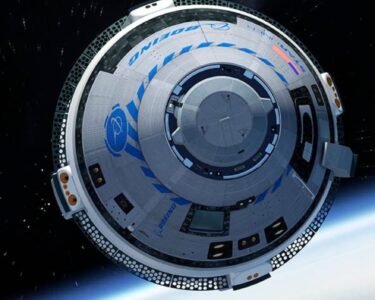NASA plans to send a group of three mini rovers to the Moon. That is aiming to assess their ability to work together. And not only this, but they also possess the ability to have direct control without the involvement of any humans as controllers on Earth.
Will Robots Overtake the Process of Autonomous Operations?
We call this project CADRE (Cooperative Autonomous Distributed Robotic Exploration). And it also shows an experiment to bring out a new technology. Besides representing an important step towards making the robots capable of doing their operation on their own. They also predict many impressive missions in the future.
What is the Exact Date of the Arrival of Mini Rovers Towards the Moon?
The CADRE mini rovers are scheduled to arrive on the Moon in 2024. As the part of NASA’s CLPS (Commercial Lunar Payload Services) initiative. Besides it, they will be deployed onto the Reiner Gamma region of the Moon using tethers. Moreover, these mini rovers are roughly the size of a carry-on suitcase and equipped with four wheels.
What Will be the First Step of Mini Rovers Upon Landing?
When they will land on the moon, these mini rovers will see out a suitable spot for sunlight exposure. This spot would be the place where they will extend their solar panels to recharge. Aside this, they will spend an entire moon day, that is equal to about 14 Earth days. And this engagement in various experiments is would evaluate their capabilities too. Now that is impressive!
What is the Core Purpose of Sending Mini Rovers to the Moon?
The foremost goal of this cooperative robotic mission is to see how such missions can potentially enable new scientific discoveries. Or they will be able to provide support for scientists during future moon mission. By taking measurements from multiple locations. These mini rovers will aim to showcase the advantages of teamwork too. And this will be among good robotic systems in space exploration.
Let’s Know More About The Project of Mini Rovers:
The trio of four-wheeled rovers will set their mission by one by one, and they will be seeking out sunny spots to open their solar panels and charge up. And after the completion of this task, they will conduct experiments for a full moon day. Which will be equal to approximately 14 Earth days.
And if we talk about the main aim of the CADRE projects. Then they will demonstrate the effectiveness of a network of mobile robots working together one by one, and they will do it without the need for human intervention.
How Mini Rovers are the Part of NASA’S CLPS? Let’s Find Out!
These rovers are part of NASA’s Commercial Lunar Payload Services (CLPS) initiative. And they are set to reach the Moon’s Reiner Gamma region in 2024.
The focus of doing operations by own is such as impressive feature. While mission controllers on Earth provide a general direction, these rovers themselves will select a leader too. And allocate tasks among each other to accomplish their collective mission.
The rovers’ high level of autonomy is enabling them to make independent decisions, and these would includes:
- Coordinating movements
- Avoiding obstacles
- Creating 3D images of the moon surface using stereo cameras
What Technical Challenges Would be Faced by Rovers?
Additionally, CADRE aims to assess the rovers’ adaptability in facing technical challenges. The success of this experiment will also highlight many future missions. If you are wondering then they will be specialized in navigating complex and scientifically significant terrains.
Though the primary focus of CADRE is not scientific research. The rovers will carry ground-penetrating radars too. By driving in formation and using radio signal reflections from each other. They will also generate a 3D image of the subsurface that would be around 33 feet below the lunar surface.
And it is quite impressive that this innovative approach would allow these mini rovers to collect more educative data. Which will further help out in the comparison to traditional ground-penetrating radar systems.

What is the Clever Solution to Tackle These Potential Challenges?
The rovers will have the potential challenge of surviving the extreme thermal conditions prevalent at the Moon’s equator. The daytime temperature would be around up to 237 degrees which is Fahrenheit (114 Celsius). And that is why they must possess qualities of robustness, compactness, and lightness.
The CADRE team came up with a clever solution to tackle this challenge. Which will involve the implementation of 30-minute wake-sleep cycles. That is why to cool off and recharge their batteries, the mini rovers will power down every half-hour. And upon waking, they will exchange health status information and select a leader for the upcoming phase of the mission.
Subha Comandur is the CADRE project manager at NASA’s Jet Propulsion Laboratory in Southern California. He said:
“Demonstrating a network of mobile robots can collectively achieve a task without human intervention. This breakthrough has the potential to revolutionize future exploration approaches too. Instead of relying on humans to control each rover, the question for future missions will be: “How many rovers do we send, and what can they achieve together?”
That is why mission controllers on Earth will send a general directive to the rovers’ base station aboard the 13-foot-tall (4-meter-tall) lander. And the team of small robots will then elect a “leader,” responsible for distributing work assignments too. Each of the mini rovers will independently determine the safest and most effective way to complete its designated task.

What is the Collective Team Work & Coordination in Mini Rover’s Mission?
The CADRE project goes beyond just testing autonomy and teamwork capabilities.
- The mini rovers must also confront the challenge of surviving the harsh thermal conditions near the Moon’s equator. Which is particularly demanding for small robots.
- In the intense sunlight, these rovers might experience midday temperatures as high as 237 degrees Fahrenheit (114 Celsius).
What is the 30-minute Wake & Sleep Cycle?
In order to prevent the rovers from overheating, the CADRE team devised a good solution. Which is the implementation of 30-minute wake-sleep cycles. Every half-hour, the mini rovers will power down. Which will allow them to cool off with the help of radiators.
Once they wake up, they will communicate their health status with each other through a mesh radio network, through Wi-Fi network. This information exchange enables them to collectively elect a leader based on fitness for the upcoming task. Then, they embark on another round of lunar exploration.
What Could be the Potential Forecast of Mini Rovers in Scientific Inventions?
The main objective of the mini rovers is to demonstrate how multirobot missions can pave the way for new scientific discoveries. And how they will provide support to astronauts during future moon’s missions. One of the rovers is pictured alongside a much larger engineering model of NASA’s Perseverance rover. This joint effort is expect to showcase the potential benefits and applications of collaborative robotics in space exploration.





